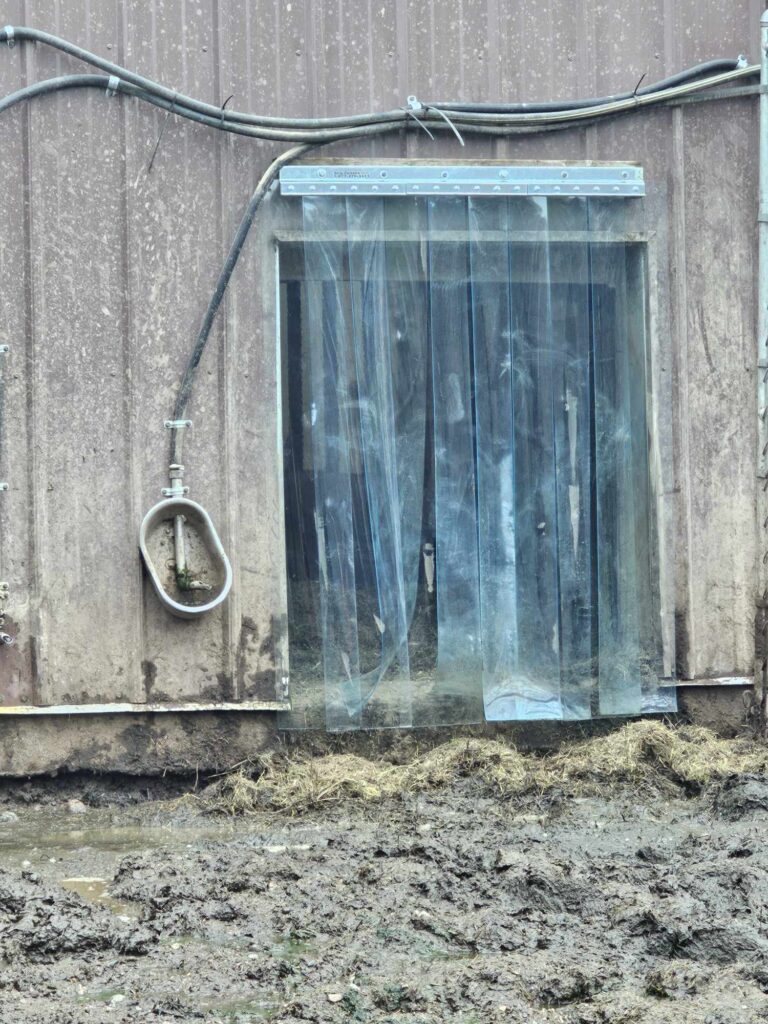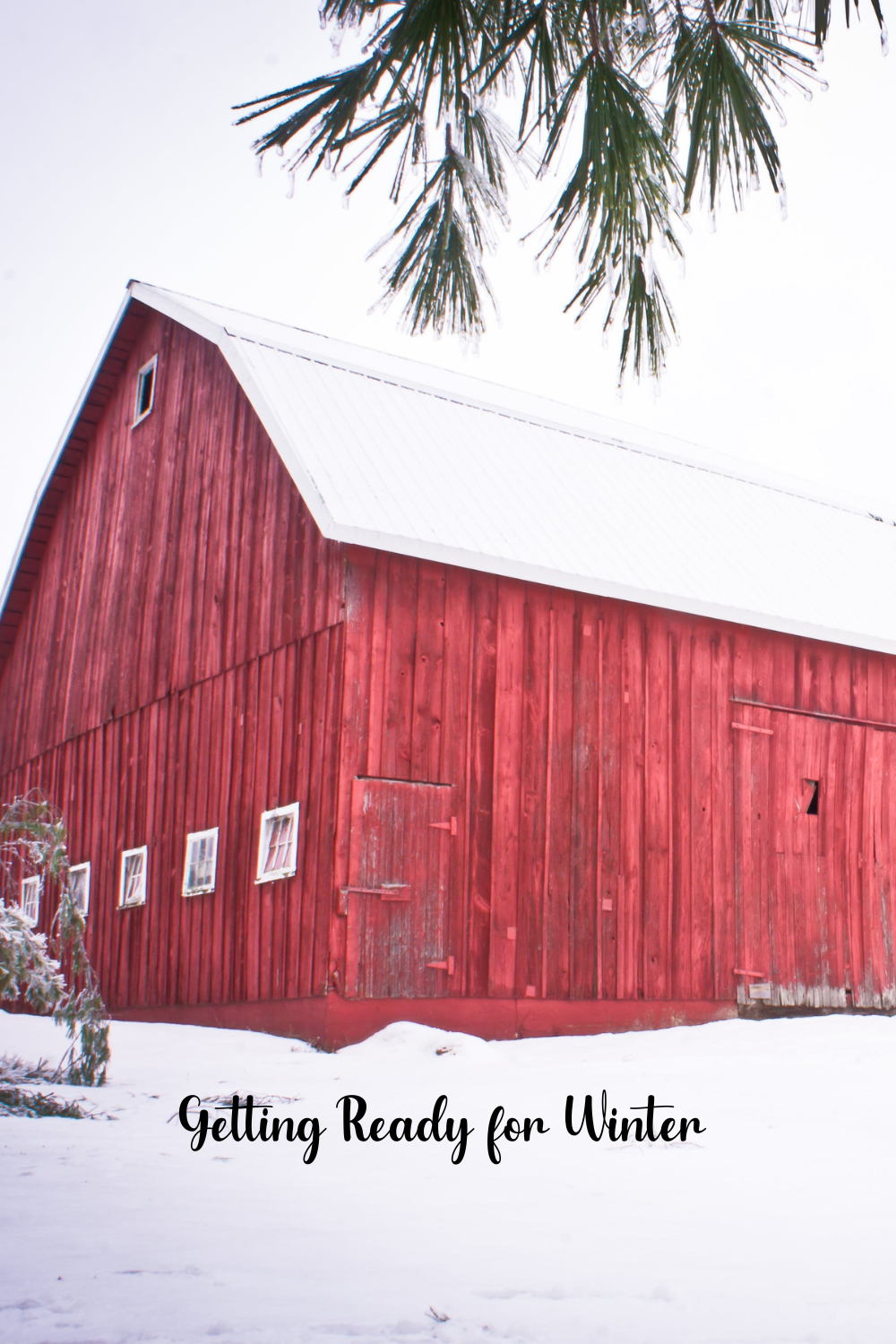Getting Ready for Winter
If you have animals to care for, getting ready for winter in your barn is very important. Farming in the harsh winter can be challenging even on a small scale. Making sure you can provide all winter long to your animals; water, feed, a place to move around and sturdy shelter with plenty of bedding is necessary. And all animals need the ability to be able to get out of the wind, rain, snow and cold.
What worked in the summer, may no longer work through the winter. Such as hoses or water lines that may freeze need to be put away. Although another source of water for your animals will need to be provided.
Besides a way to keep the barn or shelter as warm as possible for your animals. Not necessarily heating it, that is a personal preference that can come with as many pros as cons. Oftentimes depending on the amount of animals you have, body heat makes a big difference in the temperature of the barn. And if they have access to each other, some will snuggle together to keep warm.
Make sure you have the ability to give them plenty of bedding. Deep bedding for larger animals is a must for them to lay on or even burrow in when the temperatures dip. My pigs will make a big nest of all the straw and burrow under when it is really cold, especially their noses.
I’ll share the why, what and my favorites that work for us in the winter.
Why it's Important to Get Your Barn Ready for Winter?
Getting your barn ready for winter is extremely important for the health and safety of your livestock. As the temperature drops, your animals will be relying on you to provide them with a warm and comfortable environment.
Here are a few reasons why preparing your barn for winter is crucial:
Firstly, it helps to prevent illnesses. Cold and damp conditions can be a breeding ground for bacteria and viruses. By winterizing your barn, you can ensure that the temperature and ventilation are just right for your animals to stay healthy and happy.
Secondly, it can reduce the risk of injuries. In winter, the ground may become icy or slippery, which could cause your animals to slip and fall. By providing good traction and ensuring the barn is well-lit, you can help to prevent accidents and keep your animals safe.
Lastly, it can save you money if you heat your barn. Winterizing your barn can help to reduce energy costs, such as heating and lighting. By insulating your barn and making any necessary repairs, you can keep the heat in and reduce the amount of energy required to maintain a comfortable temperature. If you choose to heat your barn, please use proper heat sources and secure them properly to prevent fires.
In conclusion, getting your barn ready for winter is an important task that should not be overlooked. Not only will it help to keep your animals healthy and safe, but it can also save you money in the long run. By taking the time to winterize your barn, you can ensure that your animals are comfortable and happy throughout the colder months.
5 Important Resources Animals Need to Survive in the Winter
As winter approaches, it’s important to ensure that your animals are well taken care of and have everything they need to survive. Here are five main things you should provide your animals in winter:
- Shelter: It’s crucial to provide your animals with a warm and dry place to take shelter from harsh weather conditions. This could be a barn, or a shelter made specifically for your animals.
- Bedding: Animals need a warm and comfortable place to sleep in winter. Providing them with ample bedding such as straw or wood shavings can help keep them warm and cozy.
- Food: During winter, your animals require more food to maintain their body temperature. Make sure you provide them with a balanced diet that is rich in nutrients to keep them healthy.
- Water: Access to clean water is essential for animals to survive in winter. Make sure to check their water sources frequently to ensure they don’t freeze over.
- Exercise: Just like humans, animals need to move around to stay healthy and warm in winter. Make sure to give them enough space to move around and exercise regularly.
By providing your animals with these five things in winter, you can ensure they stay healthy and comfortable throughout the season. Remember to check on them regularly and make any necessary adjustments to keep them safe and happy.
Shelter Bedding & Exercise -
Getting Ready for Winter
I have a barn that all of my animals live in. They each have enough room to have their own space. Our preferred bedding for those that lay on the ground is straw and lots of it, when it is cold. Pigs have separate pens full of plenty of fluffy straw which I add to almost daily. The chickens invade the pig’s space throughout the day.
Although the ducks and the chickens reside in the rest of the barn. We actually do have a chicken coop area (the original part that we build our barn onto). However, the chickens tend to prefer the hay loaf or all around the pig pens to roost. And at night the ducks lay on straw on the floor.
All of our animals have access to the outdoors during the day. We have an Automatic Chicken Coop Door Opener that both the ducks and chickens. I lean boards over the door to block draws during the day. Our pigs have outdoor access 24/7 except for a day in which the high is like -20. Then I only open the doors for a few hours. To grab some water and go to the bathroom after eating.

The best thing I found to help cover an opening to a barn or shelter but yet still block the cold and wind are Barn Door Strip Curtains. I prefer clear and subzero rated. They can fasten 3 different ways and have several options. This one is the best value and quality so far!
The animals get used to them fast since they are clear even my chickens use them to go in and out too.
Food & Water -
Getting Ready for Winter
Chicken and Ducks both love eating off the ground however they’re wasteful. I use the Chicken Feeder and this Silo Feeder they both hold about 50lbs of feed. I have three spread out around the barn and one in the run.
As far as water goes, I found a hanging homemade water bucket is the best. Controversially I hang my water in the barn, but it’s not open water. Then I add a thermostatically controlled water heater in the bucket to prevent freezing.
Take a 5-gallon bucket and put 4 chicken water nipples in the bottom evenly spaced. You can also make the side mounted water nipples too. Ducks and chickens will both learn to use these. Also, I’ve found this pre-made heated bucket to be very good as well.
Ducks need a dish of open water daily to clean their nares on their bills. If they can’t, they will die. So, in addition, I have a large, heated dog dish that I use inside the barn.
And a low grain tub full of water outside with a bird bath heater in it so they can bathe even in the winter.
Winter watering pigs is more challenging; the nipples freeze in our area. So we prefer a large stock water tank (80 gallons). Additionally, you’ll want to make sure it’s only about 12-18 inches tall so they can reach it. Basically, you want it fairly heavy, or pigs get bored.
We’ve learned to pound a fence post at an angle close to the tank to hold it down in case they try to flip it. Inside the tank we use a Submersible 1500 Watt Water Heater. We’ve never had frozen water even in subzero temps for extended periods, like the polar vortex.
Additional Thoughts
Additionally, if you have a moveable shelter, you could position it for more warmth. Such as pointing the opening towards the south to prevent the cold North wind whipping through. If it has windows, position those toward southern exposure to help, bring in more heat when the sun is out.
When it is very cold, I do use these Cozy Heaters for the chickens. Controversially I also use heat lamps. But I secure them 2-3 ways, one usually a chain with a clasp, a clamp attached to the lamp too and zip ties to secure the cord. And I make sure they are way out of reach of the animal they are intended for.
I mostly use heat lamps to increase the heat in my farrowing pens when it is a cold spring and for the piglets in the safe space to warm up under. I’m not saying to use these most barns and shelters do not need extra heat. You need to do what is best for you. Any heat source can be a fire hazard. I also have Google Nest Cameras in the barn to help me watch over things.
Keep everyone safe and enjoy your journey in farming in winter!
*Some highlighted text contains links where commissions are earned. If you use these links thank you for supporting our business, we appreciate it!
For more info visit these pages; Raising Pigs, Chickens & Ducks, Feeder Pigs, Homesteading, Ducks, Adding New Chickens and Broody Hen accept new chicks.

Share via: